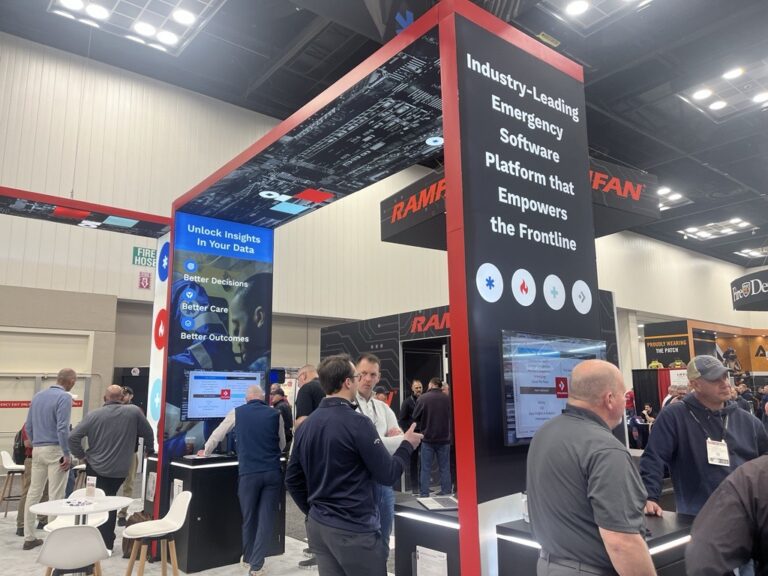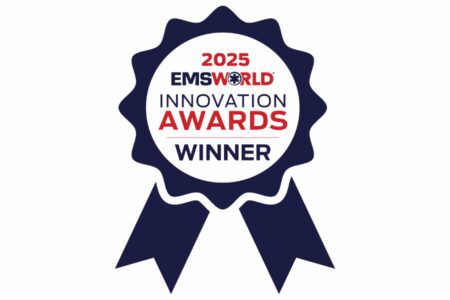Each year, FDIC International brings together the fire and emergency services community to share knowledge, explore new technologies, and shape the future of response. In 2025, ImageTrend was proud to attend as an exhibitor and presenter to Metro Chiefs, connecting with agencies, partners, and thought leaders from across the country.
From artificial intelligence to unified platforms and NERIS-readiness, several key themes emerged that are helping shape tomorrow’s fire and EMS operations.
One Platform, One Login
One major takeaway from conversations with fire and EMS leaders was the growing demand for a single, connected platform. Departments are facing rising call volumes, staffing constraints, and increased documentation demands. What they don’t need is a collection of logins and disconnected systems.
At ImageTrend’s booth, attendees saw firsthand how our solutions are designed to streamline operations. Fire and EMS teams can rely on one platform that supports everything from incident documentation and analytics to community health tracking and billing.
“Consistency is really important for these departments,” noted Joe Graw, Chief Growth Officer at ImageTrend. “They want to avoid training crews on multiple systems or duplicating data entry. Having fire and EMS data integrated in one place allows for smoother workflows and more effective reporting.”
AI Assist and Voice-to-Field: Technology that Works for You
Artificial intelligence was another standout topic this year. ImageTrend’s AI Assist took center stage during the Metro Officers Innovation Briefings, where Troy Lachinski, Fire Product Manager, and Jason Marvel, VP of Partnerships, gave a live demo showcasing how AI can streamline documentation, reduce workload, and support better decision-making in the field.
Attendees saw how voice-to-field dictation and smart image recognition allow providers to complete ePCRs more quickly and accurately, whether by speaking into their device or snapping a photo of a medication label, ID, or face sheet. For agencies managing thousands of incidents each year, these tools offer significant time savings. Each use of AI Assist may save around five minutes per run form, which can add up quickly for high-volume departments and help crews spend more time focused on patient care.
Joe noted that the conversation around AI didn’t stop at documentation. “Leaders are asking how AI can be extended into continuous quality improvement (CQI), reporting, and analytics,” he said. “They want to move beyond manual report building and start receiving real-time insights that help guide training, identify anomalies, and improve outcomes.”
NFIRS to NERIS: The Future of Reporting
With the transition from NFIRS to NERIS underway, the fire service is facing one of the most significant data shifts in recent history. At FDIC, Troy Lachinski and Jason Marvel joined the “Live at FDIC” podcast to discuss how agencies can prepare for the transition and how ImageTrend is leading the way in providing a seamless, NERIS-ready solution.
A key part of that preparation is ensuring historical data from NFIRS remains usable for benchmarking and analysis. Departments want to continue evaluating response times, staffing impacts, and ISO ratings without disruption.
“Agencies don’t want to lose access to historical trends,” said Troy. “We’re working on ways to crosswalk NFIRS data to NERIS, so leaders can still evaluate operational performance just like they’ve always done.”
Proactive Community Health and the Role of Whole Blood
Another major theme at FDIC this year was the fire service’s growing role in community health. Rather than simply responding to rising 911 call volumes, leaders are looking for ways to get ahead of demand and support their communities more strategically.
Joe described it as a shift toward creating more value through data. “Instead of needing more resources to respond to every 911 call reactively, departments are asking how they can use data to proactively manage care for high utilizers and vulnerable citizens. This is about helping agencies become more dynamic and focused on improving outcomes, not just answering calls.”
Whole blood administration also emerged as a hot topic. Departments want guidance on how to build use cases, identify key metrics, and manage these programs operationally. With whole blood now billable as an ALS2 procedure, the interest is only growing.
There’s also an increasing appetite for prescriptive analytics, using real-time performance data to drive training. “Let’s say an agency’s IV success rate drops below a certain threshold,” Joe explained. “Ideally, the system should automatically serve up targeted LMS content to help those providers improve. That’s where we can really start transforming readiness and care quality.”
Interoperability and the Power of Outcome Data
As medical calls continue to make up the majority of fire department responses, interoperability with hospitals is more important than ever. Departments aren’t just looking to chart efficiently, they want to understand how their interventions impacted patient outcomes, even when they aren’t the ones transporting the patient.
Joe shared a powerful example: “In many systems, fire is first on scene and provides critical ALS care, but another agency completes the transport. That outcome data often goes to the transporting agency. Fire departments want access to that same information, so they can see if the care they provided made a difference.”
ImageTrend’s connected solutions and treatment handoff workflows allow first responders and transport crews to work seamlessly within the same platform. With Elite and Health Information Hub (HIH) working together, outcome data doesn’t have to get stuck at the hospital, it can return to the people who started the care.
Ultimately, fire and EMS leaders are looking for more than documentation tools. They want connected systems that surface real-time insights and deliver a clearer picture of performance, outcomes, and community impact.
Looking Ahead
FDIC 2025 made one thing clear: fire and EMS leaders are ready for change. Whether it’s adopting AI to reduce documentation time, preparing for the NERIS transition, integrating outcome data for better decision-making, or taking a more proactive approach to community health, agencies are seeking smart, strategic solutions that evolve with their needs.
The industry is shifting from reactive response to forward-thinking care, fueled by data and innovation. As departments face increasing demands, shrinking resources, and more complex challenges, the need for a connected, intelligent platform has never been more urgent.
For more highlights from FDIC 2025, watch the Live at FDIC podcast featuring Troy Lachinski and Jason Marvel.




